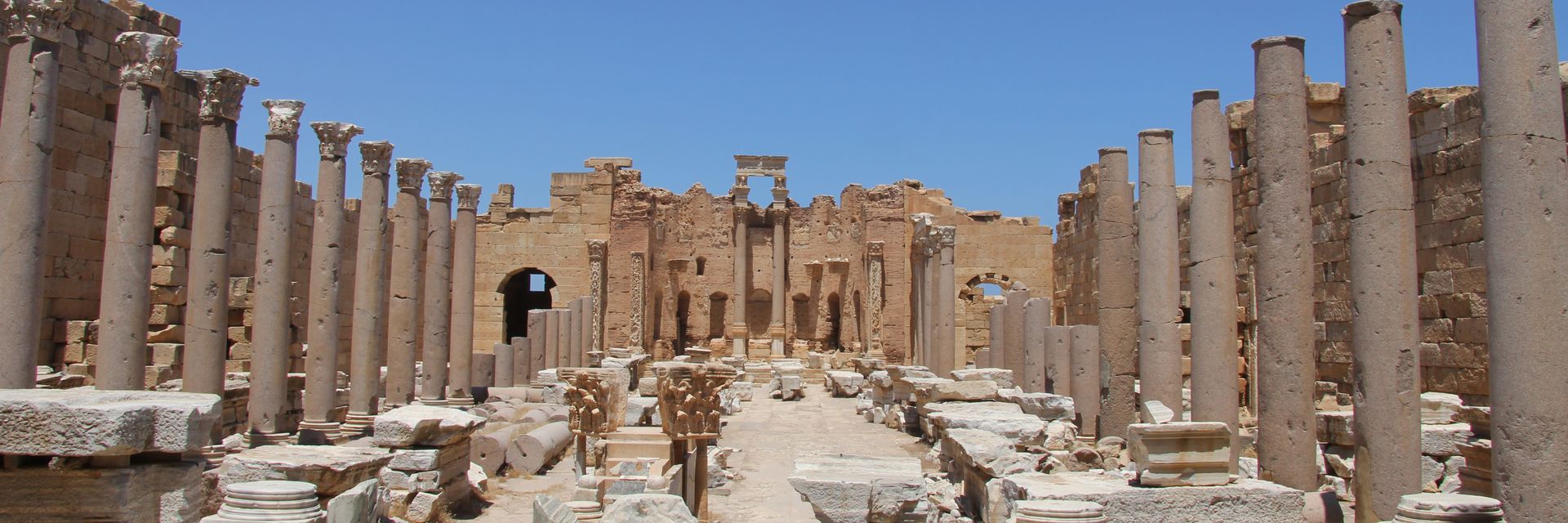Rising from the bloody conflicts of imperial Rome, Septimius Severus became its first emperor of African origin. Widely viewed as a despot, he nonetheless bestowed many gifts on his North African homeland, and his elder son and successor even expanded the rights of its provincial subjects.
◊
Ancient Rome was a bloody and bellicose place. It wasn’t just Julius Caesar whose rule ended abruptly in a brutal death. Assassination was Rome’s most common method to clear the path for a new leader.
The rise of Septimius Severus to emperor in 193 CE was another example of an ambitious senator virtually stepping over bodies – many of them killed on his command – on the way to the throne. There was one key difference, however, not in the modus operandi but in the person of the new emperor.
Septimius did not descend from the ranks of Roman royalty – he was not a favored son of the empire. Instead, he ascended from a far-flung province. Specifically, he came from Leptis Magna, a Roman colony in what is now Lybia. He was the first African ever to rule as Rome’s emperor.
He was no saint, to be sure. Widely viewed as a despot, he was a war-driven ruler who was obsessed with expanding the boundaries of the empire in all directions. He and his firstborn son, Caracalla, whom he named as co-emperor, were military-minded leaders who showed no compunction in assassinating rivals and massacring enemies.
Yet they were both remarkably kind and generous to Septimius’s African birthplace. The elder turned the sleepy port town of his birth – located in modern-day Libya – into a metropolis to rival the glories of Rome and Alexandria. Caracalla further benefited the provinces by bestowing all freeborn subjects in them, including those of Leptis Magna, with full citizenship as Romans.
For more on the historic colony and its present-day condition, check out LEPTIS MAGNA: ROME IN AFRICA on MagellanTV.
From Blood Risen: Severus Claims the Throne through Murder and Assassinations
Septimius Severus was born to wealthy and well-placed parents in 145 CE. His father was native-born of Punic (that is, Phoenician) heritage and had achieved the rank of equestrian in the occupying military. His mother was Roman-born, with relatives who had deep connections to the elite at the heart of the empire.
Septimius was able to use family connections to get a placement in the senatorial structure in Rome around 162. In 191, after performing administrative duties of increasing importance, he caught the eye of the emperor Commodus. Commodus, who was infamous for being both insane and bloodthirsty, elevated Septimius to the position of governor of the region that included the strategically important Danube River. Septimius raised an army of significant size there.
It was only a year after Septimius moved to the Danube that Commodus, in the fashion of the day, was assassinated by a combination of poisoning and strangulation. Septimius, who felt indebted to Commodus, prepared to go to battle to avenge the violent death of his mentor. But before he acted, the next emperor, Pertinax, took charge and was quickly dispatched by members of the Praetorian Guard.
Pertinax was followed by a wealthy Roman citizen who literally won an auction held by the Praetorian Guard to determine his successor. This star-crossed moneybags, Didius Julianus, reigned 66 days before he, too, was murdered by a soldier.
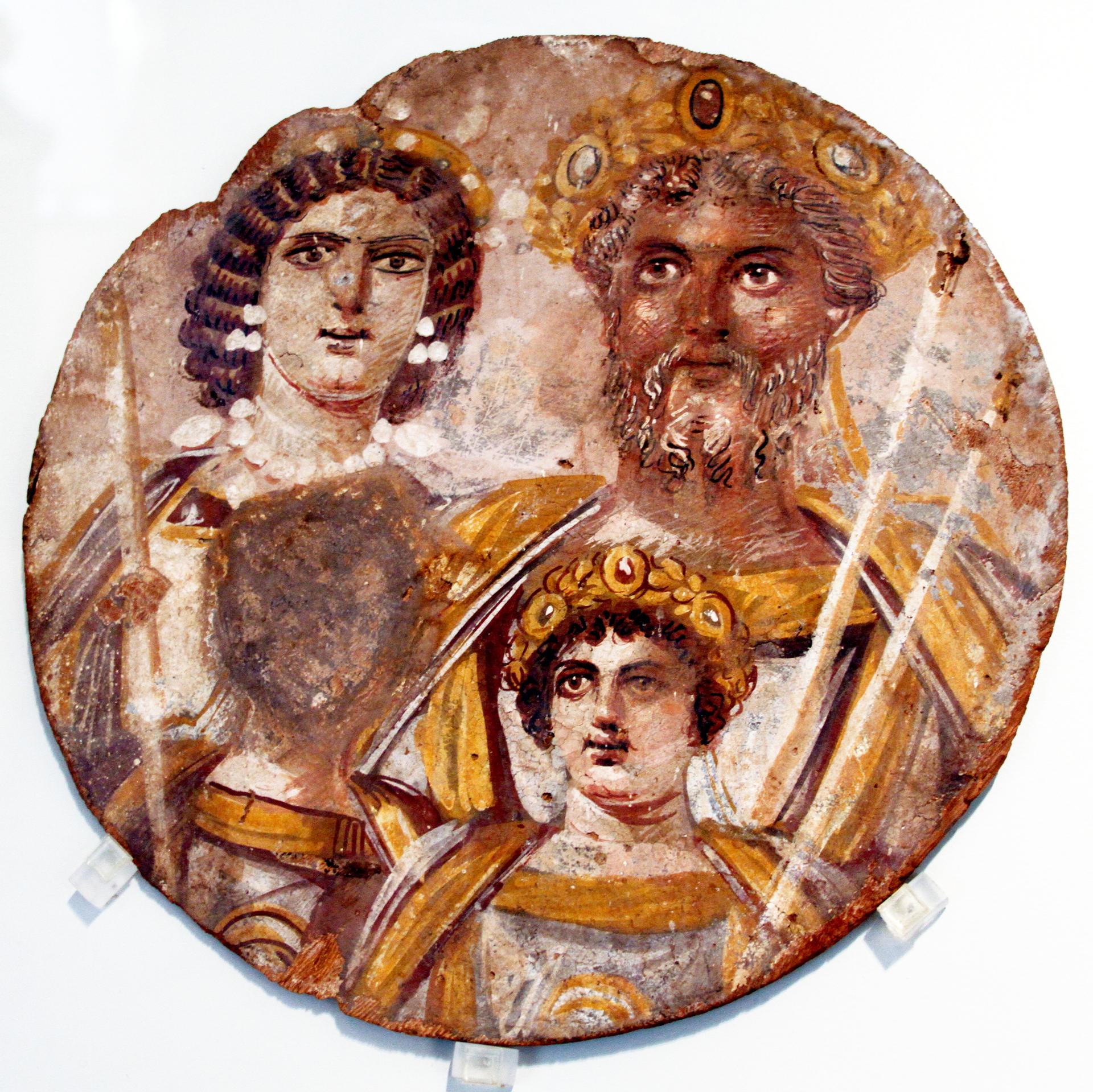
The Severan Tondo, a portrait of the family of Septimius Severus. Note that the image of the younger son, Geta, has been literally defaced following his assassination by Caracalla. (Source: Jbribiero1 via Wikimedia Commons)
Septimius led his troops to Rome to clean things up and install a longer-lasting emperor – himself. He boldly strode into town with his army and grabbed the blood-soaked reins of power. He ordered the execution of all the Praetorian Guards who had participated in the death of Didius and dismissed the remainder, filling up the vacated ranks of the Guard with his own troops. He then faced off with his rivals, one named Albinus and the other Niger, and, using a combination of bad-faith diplomacy and frontal assault, did away with them both, assuring his uncontested ascendancy to the emperor’s throne.
The Emperor Strikes Back: Septimius Severus Fights Non-Roman – and Roman – Rivals
Not to belabor the point, but Septimius Severus was a belligerent ruler. He immediately threw himself and his military resources into overpowering his non-Roman rivals. As emperor, he took on the Parthian Empire, which held land east of the Mediterranean and had designs on Roman provinces. Septimius led his troops across the Euphrates and into Mesopotamia, seeking to extend Rome’s territory. Try as he might, he could not conquer the Parthians, but he held them off, and in the process extended the reach of Rome to include parts of western Arabia.
Returning to Rome, the now battle-seasoned emperor took aim at the vaunted Senate. Septimius had never trusted the senators, even though he had been one of them. Perhaps it was because he had been one of them. He exacted vengeance on the senators he deemed corrupt or aligned with one of his rivals by rounding them up and having scores of them executed, again replacing them with cronies.
Having now succeeded in “cleansing the stables” of unwanted resistance, he turned his attention to internal matters, launching a building program featuring a monument to himself in Rome – the Arch of Septimius Severus – that was but the earliest example. And, while Septimius was engaged with internal affairs, he didn’t drop the ball on his expansionist dreams. He had troops actively working to broaden the empire in both southern and western directions.
The geographical size of the Roman Empire was never larger than during the rule of Septimius. Rome never slept on his watch.
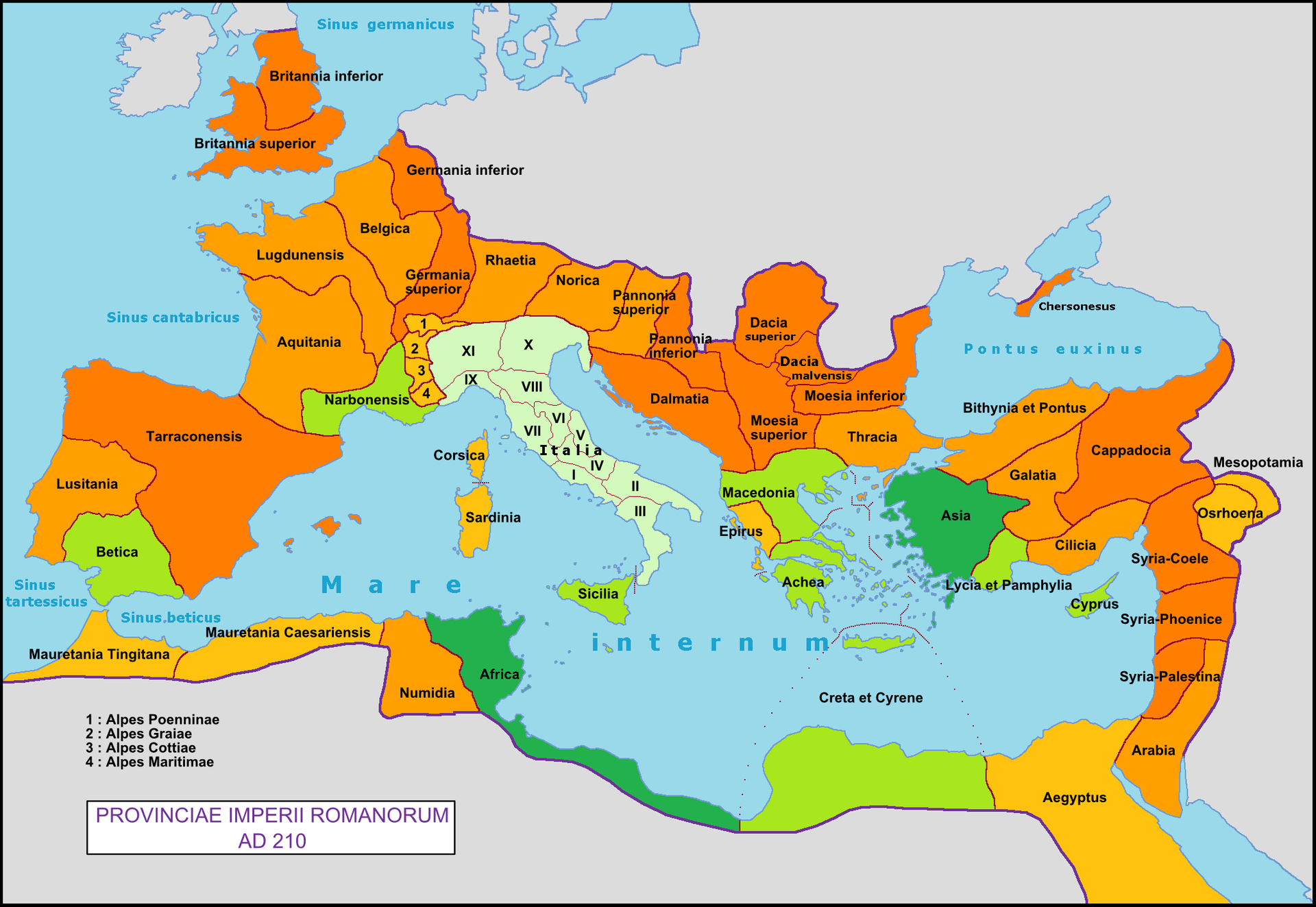
Map of the Roman Empire during the time of Septimius Severus. (Source: Mandrak via Wikimedia Commons.)
Septimius Invests in His Hometown, Leptis Magna, in Africa
Septimius Severus didn’t only occupy himself with building monuments to himself in Rome. He also expansively extended his generosity to the residents of his hometown. He undertook a massive building campaign in the province of Africa that turned the town of Leptis Magna from an overlooked port town to a gleaming, marble-coated city. It became so glamorous a settlement that wealthy Romans built lavish beachfront villas on the outskirts of town.
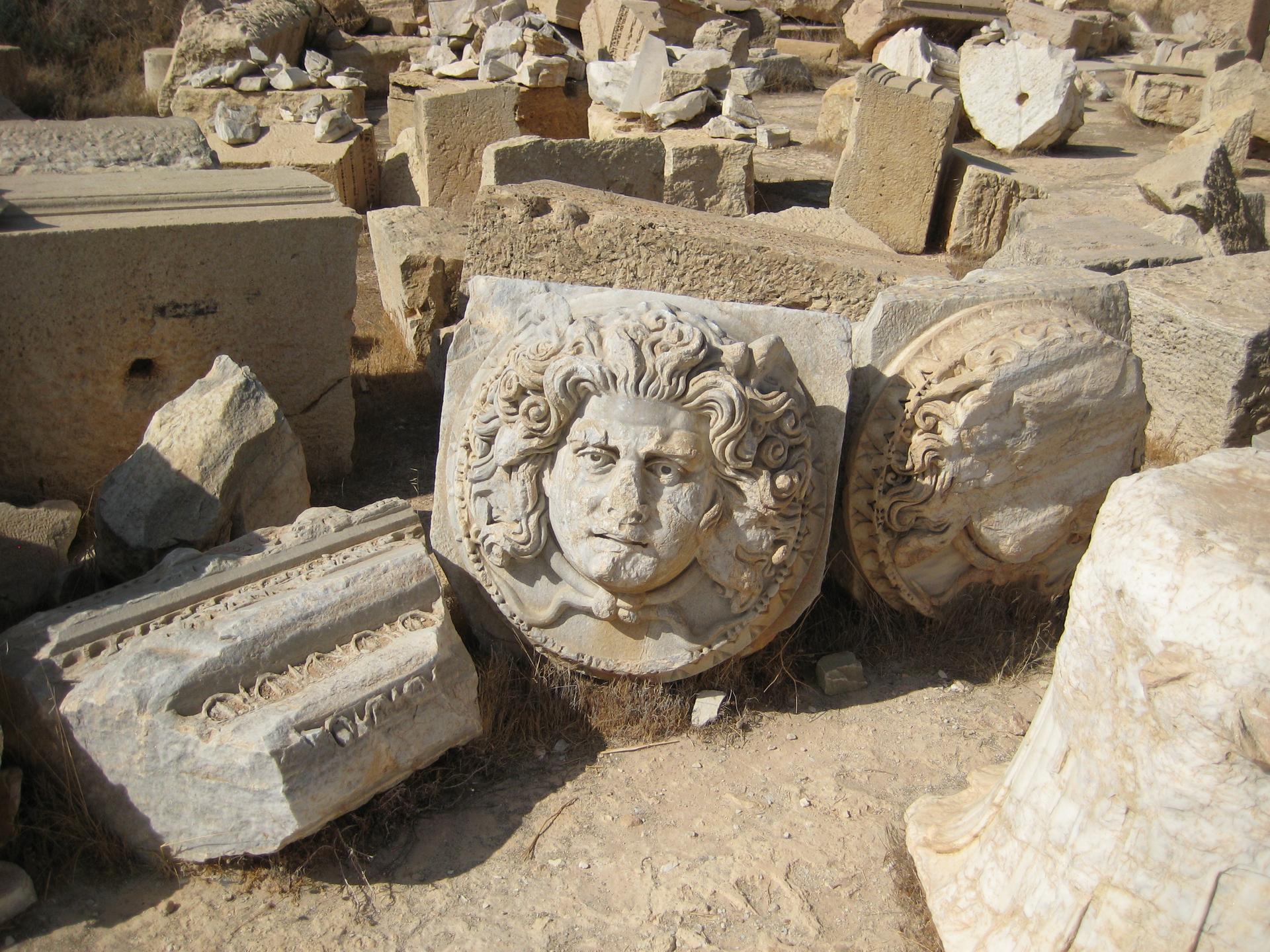
Contemporary image of the ruins of Leptis Magna. (Source: Sasha Coachman via Wikimedia Commons)
Among his accomplishments in Leptis Magna were the establishment of a new forum, baths, and a basilica. He also built a magnificent new aqueduct, which provided the town with fresh drinking water and encouraged its growth. He had several impressive public buildings constructed, including a large amphitheater and a new theater, both of which were adorned with works of sculpture. Opening these buildings to the public, as opposed to only the wealthy, lifted the spirits of the provincial residents and made the emperor a true hometown hero.
Septimius and His Son Caracalla Expand Rights in the Provinces
Septimius Severus also implemented several reforms that benefited the people of Africa. He was the first emperor to allow African soldiers to serve in the Roman army, a position that paid well and contributed to the creation of a middle class. In addition, it helped foster a sense of unity among the province’s residents and allowed them to become more fully integrated into Roman life.
Septimius was one of the few African-born Roman emperors. During his rise to power, race was not a primary concern in the Roman Empire. As emperor, he was known for his commitment to justice, fairness, and equality regardless of race, religion, or place of origin.
Septimius’s firstborn, Caracalla, was named co-emperor with his father to strengthen his grip on the throne and assure Caracalla’s ascendancy to emperor when Septimius could no longer serve. One of Caracalla’s major acts was to issue an edict that extended Roman citizenship to all freeborn men in the provinces, further elevating their status. The edict, called the Antonine Constitution, also expanded women’s rights in the provinces to match the rights granted to free women of Rome.
Caracalla may seem rather heroic based on this edict, but he was equally caught up in internecine warfare and bloodletting. His highest-profile execution, which was accepted as commonplace, was his murder of his younger brother Geta, to rid his path of rivals to his power.
Though Septimius and Caracalla did not run a cash-poor regime, with coffers full due to the expansion of the borders of the empire, it has been suggested that an ulterior motive for expanding the rights of the provincials was to broaden the tax base and free more money for the price of nonstop military adventures.
At their core, Septimius and his son Caracalla had motives both elevated and depraved. As my colleague Mia Wood has written, “we are simply human, all too human. The surging and striving and power of life projects us in myriad directions, some of which yield terrible oppression, apparently needless suffering, and unnecessary death.”
The Diverging Ends of Septimius and Caracalla
Septimius, contrary to what you might assume, was not deposed to make room for another emperor. Rather, he actually was able to establish a Severan dynasty of succeeding emperors. Though it encompassed only four emperors and lasted a mere 42 years, that was one of the longer stretches of continuity for the Romans of that time.
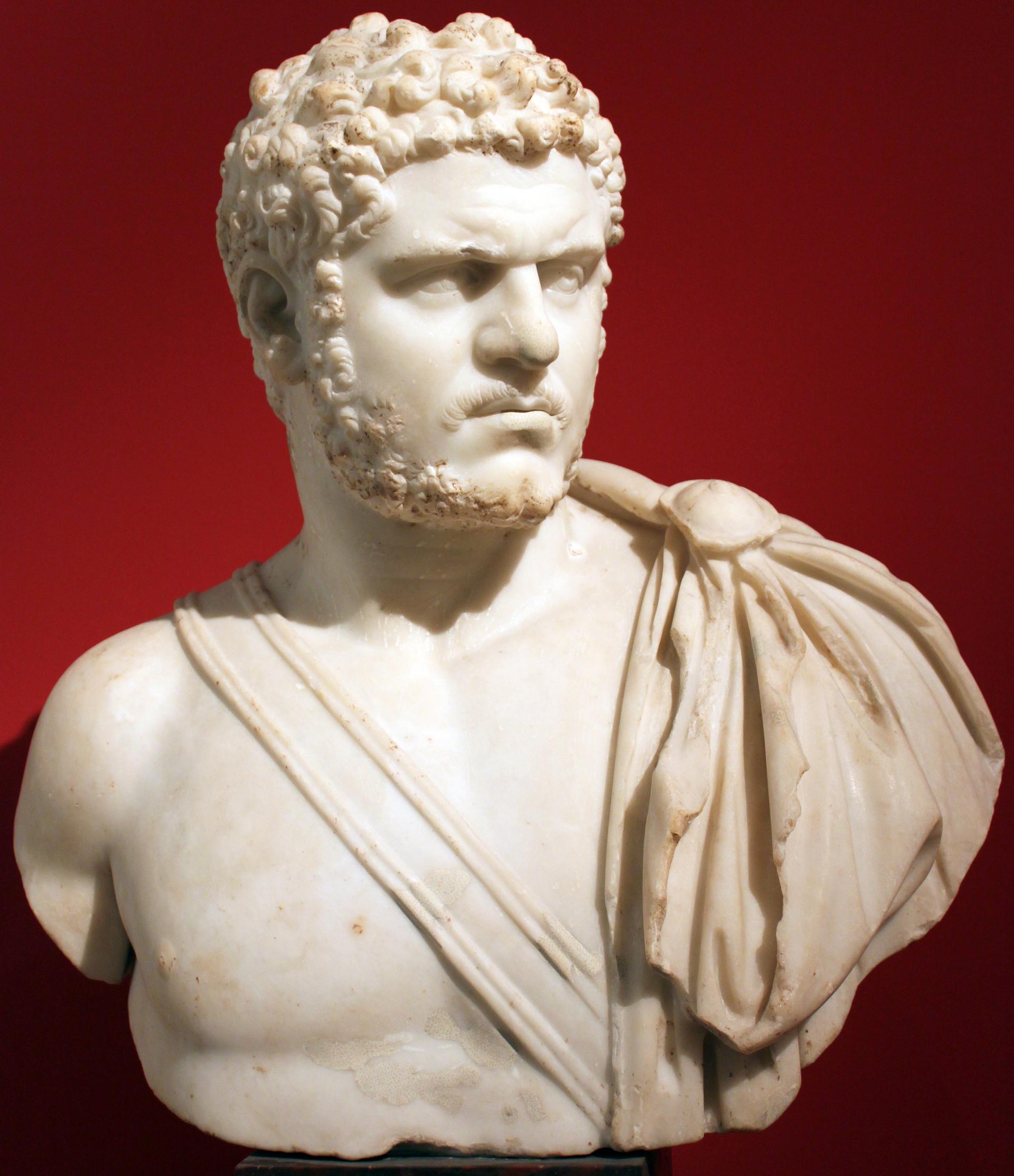
Bust of Caracalla, c. 212–217. (Source: Anagoria via Wikimedia Commons)
Septimius died in battle in Britain. He was dead-set on claiming the entire isle of Great Britain, including Scotland, then known as Caledonia. He managed to secure and strengthen Hadrian’s Wall, a demarcation line between Britain and Scotland, but he wanted more, and he lost his life in 211 on the battlefield trying to secure a barrier deeper into Scotland called the Antonine Wall.
Caracalla attempted to continue his father’s military aims, but he was neither as lucky as Septimius, nor as well-liked by his troops. Caracalla went east in an attempt to further his father’s limited success in the Parthian War. Intensely disliked for his headstrong manner, and overextended militarily, he was murdered in 217 while taking a brief rest stop to visit a temple in the disputed lands. More bloodshed followed, and soon the next emperor, Macrinus, was on his way to reign (and eventually be executed as well).
What Happened to Leptis Magna?
Leptis Magna, the provincial town so beloved by Septimius Severus, did not last long either. It was protected for several decades by a legion of troops stationed there. Their presence stabilized the community against attack by Berber tribes that occupied the area to the south. However, in 238, the legion was disbanded by emperor Gordian III, making the city again vulnerable to raids by Berbers.
Still, Leptis Magna persevered until natural tragedy struck. In 365, the town was inundated by a fearsome tsunami that rendered great parts of the city uninhabitable. Its prominence decimated by the violence of the raging waters, it was eventually overcome by Muslim invasion in the mid-7th century. The Muslims had little use for this tiny ocean town, and, over the following centuries, it was completely lost to the shifting sands of the desert.
The town was nearly forgotten until the late 19th century, when British archaeologists began to excavate the area and map out the former outline of the city. The Brits dismantled a temple they had unearthed and restored it in the center of their new empire, London, where it still stands. Then Mussolini briefly annexed the area and opened the former city to further excavation by Italian archaeologists. And so on, and on, as empires rise and fall, political regimes come and go, and the lessons of the ancients slowly come into view. The main lesson? Nothing is permanent, not the governments of humankind, the rulers of past and present, or even the structures exposed to the elements. All eventually fall.
Ω
Kevin Martin is Senior Writer for MagellanTV. He writes on various topics, including outer space, the fine arts, and modern history. He has had a long career as a journalist and communications specialist with nonprofit and for-profit organizations. He resides in Glendale, California.
Title Image: Remains of the city of Leptis Magna. (Source: joepyrek via Wikimedia Commons)
